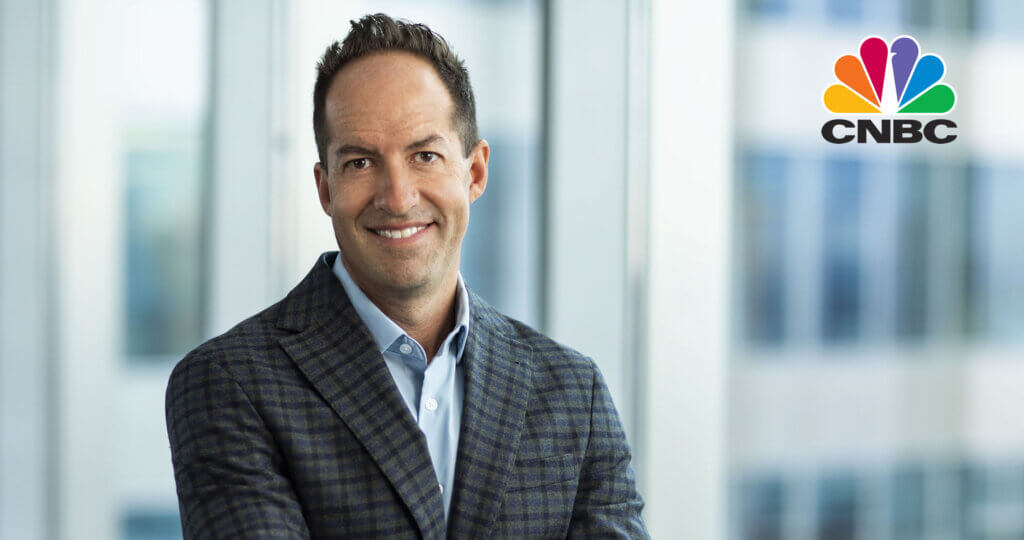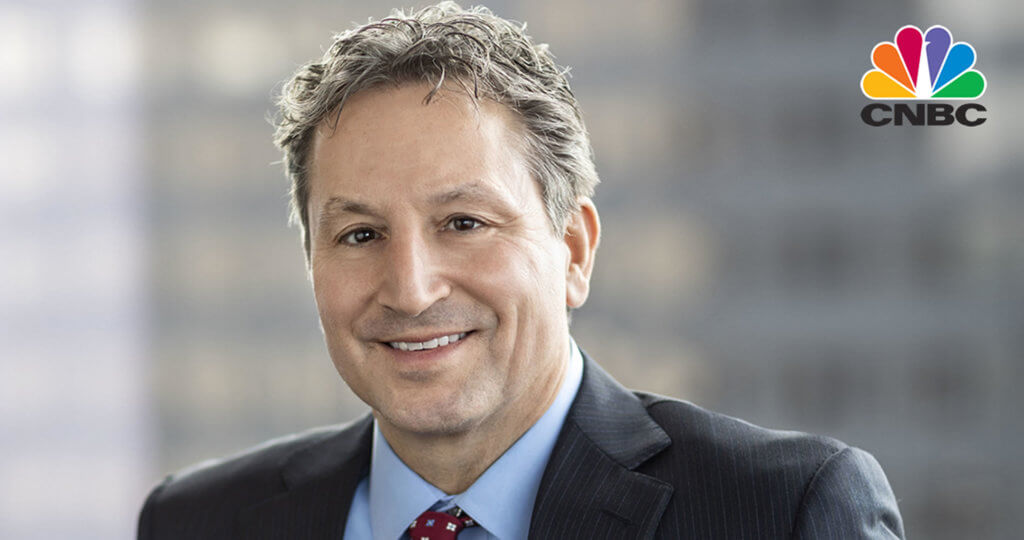Oakmark Global Fund - Investor Class
Average Annual Total Returns 06/30/16
Since Inception 08/04/99 9.20%
10-year 4.48%
5-year 4.26%
1-year -15.61%
3-month -3.66%
Gross Expense Ratio as of 09/30/15 was 1.12%
Past performance is no guarantee of future results. The performance data quoted represents past performance. Current performance may be lower or higher than the performance data quoted. The investment return and principal value vary so that an investor’s shares when redeemed may be worth more or less than the original cost. To obtain the most recent month-end performance data, view it here.
Brexit Changes the Narrative
Oh, if it had only ended one week earlier! Before the Brexit vote, the June quarter had been far more sedate than the March quarter, and market performance was improving as the vote neared. But then the unexpected happened, and investors fled to what the media calls “safety.” As always, we have difficulty accepting that overpriced assets of any type should be considered safe, but in moments of duress, price action suggests that other investors do not share our opinion. So, what can those who panicked about the Brexit vote be thinking? First, that interest rates are unlikely to go up in the foreseeable future. Second, that business confidence has been impaired so much that capital investment will be inhibited. Third, that a wave of political populism is surging across the world and creating a challenging environment for capitalist economies. If the panic-stricken are correct, their conclusions may have some merit, but we will not know the outcomes for quite some time. The Brexit vote itself is only the beginning of a process estimated to take a minimum of two years. In the meantime, politics will evolve, business leaders will attempt to make profitable investments and interest rates will fluctuate. And we will do our best to optimize the returns of the Oakmark Global Fund by purchasing undervalued companies that are growing their intrinsic value over time and that are managed by individuals who think and act like long-term owners of the business.
Quarter Review
For the quarter, the Oakmark Global Fund lost 4%, which compares to the MSCI World Index’s return of 1% and the Lipper Global Fund Index’s return of 1%. For the first six months of 2016, the Fund lost 11%, which contrasts to the MSCI World Index returning 1% while the Lipper Global Fund Index remained flat. Since inception in 1999, the Fund has achieved a compound annual rate of return of 9% versus 4% for the MSCI World Index and 4% for the Lipper Global Fund Index.
For the quarter, the U.S., the U.K. and South Korea were the only positive contributors. Switzerland, Germany and Japan detracted most. LinkedIn (U.S.), CNH Industrial (U.K.), Union Pacific (U.S.), Omron (Japan) and Hirose (Japan) were the leading contributors. Credit Suisse (Switzerland), Daimler (Germany), Daiwa Securities (Japan), BNP (France) and GM (U.S.) were the biggest detractors.
For the first half of 2016, the U.K., South Korea and the Netherlands were the only positive contributors. Switzerland, the U.S. and Germany detracted most. Leading contributors to return were LinkedIn, Oracle (U.S.), CNH Industrial, Samsung Electronics (Korea) and Union Pacific. Credit Suisse, Daimler, Bank of America (U.S.), Incitec Pivot (Australia) and Toyota Motor (Japan) were the largest detractors.
Portfolio Activity (aka LinkedIn, We Hardly Knew You!)
During the quarter, we eliminated three U.S.-domiciled holdings and one French bank, and purchased one U.S. holding and one U.K. bank. One eliminated holding, Centene (U.S.), was received as a result of the takeover of Fund holding Health Net (U.S.). Although Centene has interesting prospects, we decided that its valuation was not compelling at this time. The second elimination, Intel (U.S.), was sold, ironically, to fund the third elimination, LinkedIn.
What does that mean? It means that we had the rare experience of initiating a holding and selling it at or above our sell target all within the same quarter. LinkedIn’s share price collapsed early in 2016 when the company reported decelerating growth. We generally avoid such hyper-growth businesses because when that growth slows, it rarely descends in a controlled, genteel manner. LinkedIn looked different, however, as its market position and developing network effects suggested that this was a company with enduring business value. Our analysis determined that the company’s flagship offering was quickly becoming essential for human resource departments around the world to search and communicate with talent, post jobs and market their own enterprises. We chose to invest in the shares at a price more than 50% below the previous high, and to fund this purchase we sold one of the Fund’s long-term holdings—Intel. We were soon very surprised (and pleased) to find that Microsoft shared our enthusiasm for the business. Microsoft and LinkedIn announced a friendly merger transaction in mid-June, which substantially increased LinkedIn’s share price. Given that the acquisition is a cash transaction expected to close this year, we elected to sell the Fund’s LinkedIn shares.
Our second new purchase was Lloyds. It is a leading U.K. retail bank with over 25% deposit market share. Over 65% of its loans are mortgages with an average loan-to-value at an impressive 46%. Its balance sheet is strong with ample liquidity, the bank is run by a management team focused on maximizing returns, and it pays out the vast majority of its earnings to shareholders. This is a position we initiated after the Brexit vote. We understand there is likely to be slower growth in the short term due to the economic uncertainty caused by the non-binding vote. However, the share price fell nearly 40% in U.S. dollar terms from June 23 to the market close on June 27, allowing us to buy this quality franchise at what we believe is a discount to book value.
We sold our position in BNP to fund the Lloyds purchase. While we still find BNP attractively priced, we were able to realize a sizable tax loss while buying a bank with comparable upside that earns even higher returns.
Currency Hedges
Despite the weakening of many currencies during the quarter, we continue to believe some currencies are overvalued versus the U.S. dollar. We maintained our defensive currency hedges and ended the quarter with approximately 30% of the Swiss franc and 11% of the Australian dollar hedged.
Thank you for being our partners in the Oakmark Global Fund. Please feel free to contact us with your questions or comments.
The holdings mentioned above comprise the following percentages of the Oakmark Global Fund’s total net assets as of 06/30/16: LinkedIn Co. 0%, CNH Industrial NV 4.6%, Union Pacific Corp. 2.4%, OMRON Corp. 2.6%, Hirose Electric Co., Ltd. 1.4%, Credit Suisse Group AG 4.4%, Daimler AG 3.5%, Daiwa Securites Group, Inc. 3.0%, BNP Paribas SA 0%, General Motors Co. 4.0%, Oracle Corp. 3.2%, Samsung Electronics Co., Ltd. 2.0%, Bank of America Corp. 3.7%, Incitec Pivot, Ltd. 3.5%, Toyota Motor Corp. 3.2%, Centene Corp. 0%, Health Net, Inc. 0%, Intel Corp. 0%, Microsoft Corp. 0%, and Lloyds Banking Group PLC 3.1%. Portfolio holdings are subject to change without notice and are not intended as recommendations of individual stocks.
Click here to access the full list of holdings for The Oakmark Global Fund as of the most recent quarter-end.
The MSCI World Index (Net) is a free float-adjusted market capitalization weighted index that is designed to measure the global equity market performance of developed markets. This benchmark calculates reinvested dividends net of withholding taxes using Luxembourg tax rates. This index is unmanaged and investors cannot invest directly in this index.
The Lipper Global Funds Index measures the performance of the 30 largest mutual funds that invest in securities throughout the world. This index is unmanaged and investors cannot invest directly in this index.
The Fund’s portfolio tends to be invested in a relatively small number of stocks. As a result, the appreciation or depreciation of any one security held by the Fund will have a greater impact on the Fund’s net asset value than it would if the Fund invested in a larger number of securities. Although that strategy has the potential to generate attractive returns over time, it also increases the Fund’s volatility.
Investing in foreign securities presents risks that in some ways may be greater than in U.S. investments. Those risks include: currency fluctuation; different regulation, accounting standards, trading practices and levels of available information; generally higher transaction costs; and political risks.
The percentages of hedge exposure for each foreign currency are calculated by dividing the market value of all same-currency forward contracts by the market value of the underlying equity exposure to that currency.
The discussion of the Fund’s investments and investment strategy (including current investment themes, the portfolio managers’ research and investment process, and portfolio characteristics) represents the Fund’s investments and the views of the portfolio managers and Harris Associates L.P., the Fund’s investment adviser, at the time of this letter, and are subject to change without notice.






